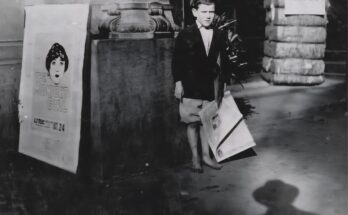Georges Weingast was born in the port city of Antwerp, Belgium, into a Jewish family whose roots were likely tied to the vibrant and diverse Jewish community that had flourished there for generations. Antwerp was known not only for its diamond trade but also for being a cultural and religious center for Jews in Belgium. As a young boy, Georges would have grown up surrounded by the rhythms of Jewish life—family celebrations, community rituals, and the ordinary experiences of childhood in a bustling European city. His early years, however, were soon overshadowed by the dark clouds of war and persecution.
With the German invasion of Belgium in May 1940, the Jewish population found itself under the control of a brutal and repressive Nazi regime. Anti-Jewish laws were introduced, forcing Jews to register, give up their jobs, and live under constant surveillance. Daily life became increasingly restricted. Georges, though just a child, was not spared from these harsh realities. The innocence of his childhood was replaced with fear and uncertainty, as Jewish families across Belgium were targeted for exclusion and eventual deportation.
In 1942, the Nazis established a transit camp in Mechelen, located between Brussels and Antwerp. Known as the Dossin Barracks, this camp became the primary site for organizing deportations of Belgian Jews to extermination camps in the East. Between August 1942 and July 1944, more than 25,000 Jews were deported from Mechelen to Auschwitz. Georges Weingast, only a boy, was among them. In April 1943, he was taken from his home and placed on one of the transports departing from Mechelen, headed for Auschwitz.
The transport to Auschwitz would have been a terrifying experience. Victims were packed into sealed cattle cars with little to no food, water, or sanitary facilities. The journey lasted several days, during which many suffered from dehydration, illness, and fear. For a child like Georges, the experience must have been especially traumatic—torn from his family, his city, and everything familiar, and thrust into the unknown depths of Nazi brutality.
Upon arrival at Auschwitz, deportees were subjected to a selection process on the ramp. SS doctors and officers assessed each person, often with just a glance, to determine who would be forced into labor and who would be murdered immediately. Georges, being a child and thus considered “unfit for work” by Nazi standards, was sent directly to the gas chambers. Within hours of arriving at Auschwitz, his life was cruelly and systematically extinguished.
The gas chambers at Auschwitz were designed for mass murder on an industrial scale. Victims were told they were going to take showers, herded into sealed chambers, and then exposed to Zyklon B gas, which killed them in minutes. Georges, like so many other Jewish children, was denied any chance at life, his potential stolen by a regime bent on extermination. He became one of the more than one million people murdered at Auschwitz, and one of the 1.5 million Jewish children killed in the Holocaust.
Though Georges Weingast’s life was tragically brief, his story remains a vital thread in the fabric of Holocaust remembrance. Each child murdered in the Holocaust represents a world lost—a future that never came to be. Remembering Georges is an act of resistance against forgetting and denial. His name, his birthplace, and the date of his deportation are pieces of a history that must continue to be told, especially for those who had no voice left to speak.
Today, we remember Georges not only as a victim but as a person who lived. He was a Belgian boy with a name, a home, and a life that mattered. His story is a reminder of the horrors that can arise from hatred and indifference, and it is a call to uphold the values of humanity, justice, and remembrance. Georges Weingast, like millions of others, must never be forgotten.


